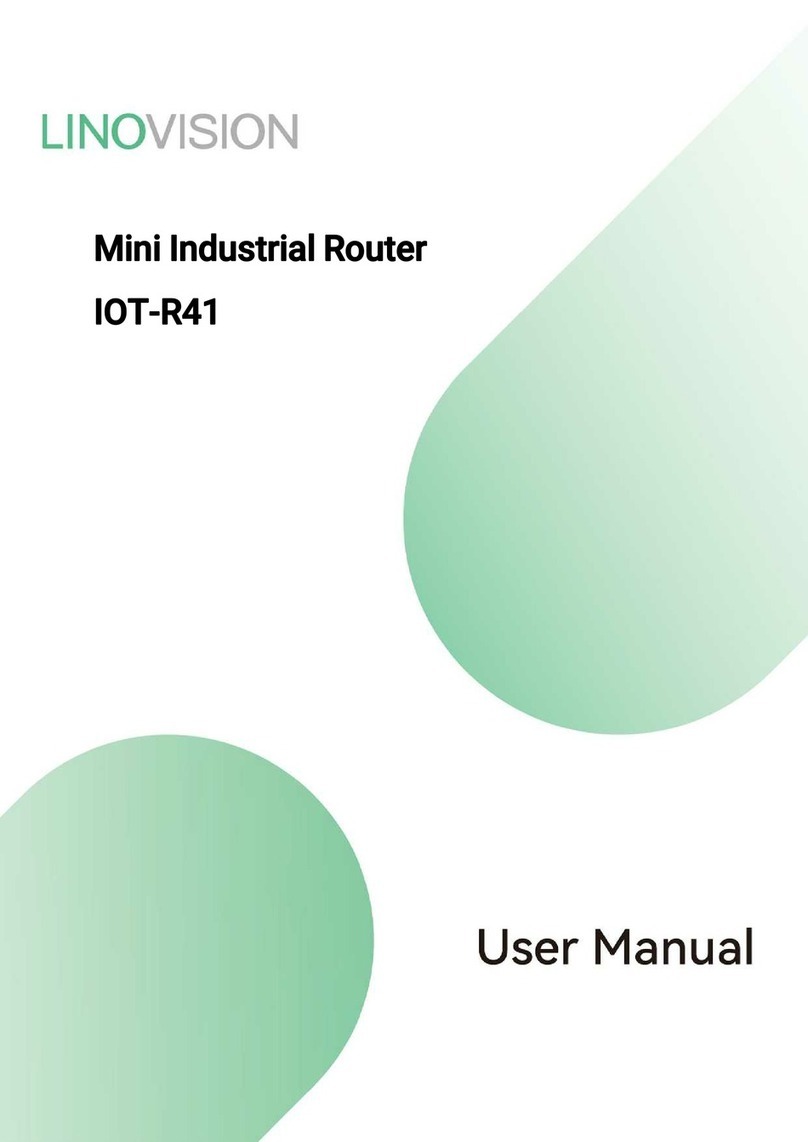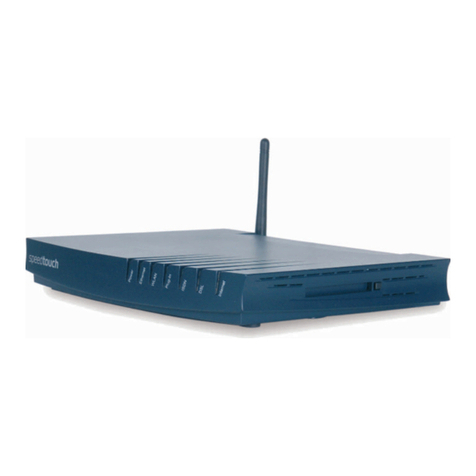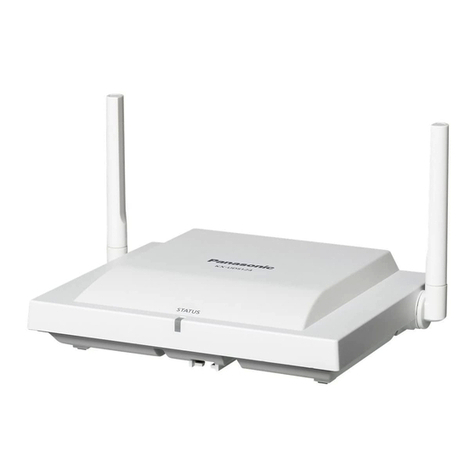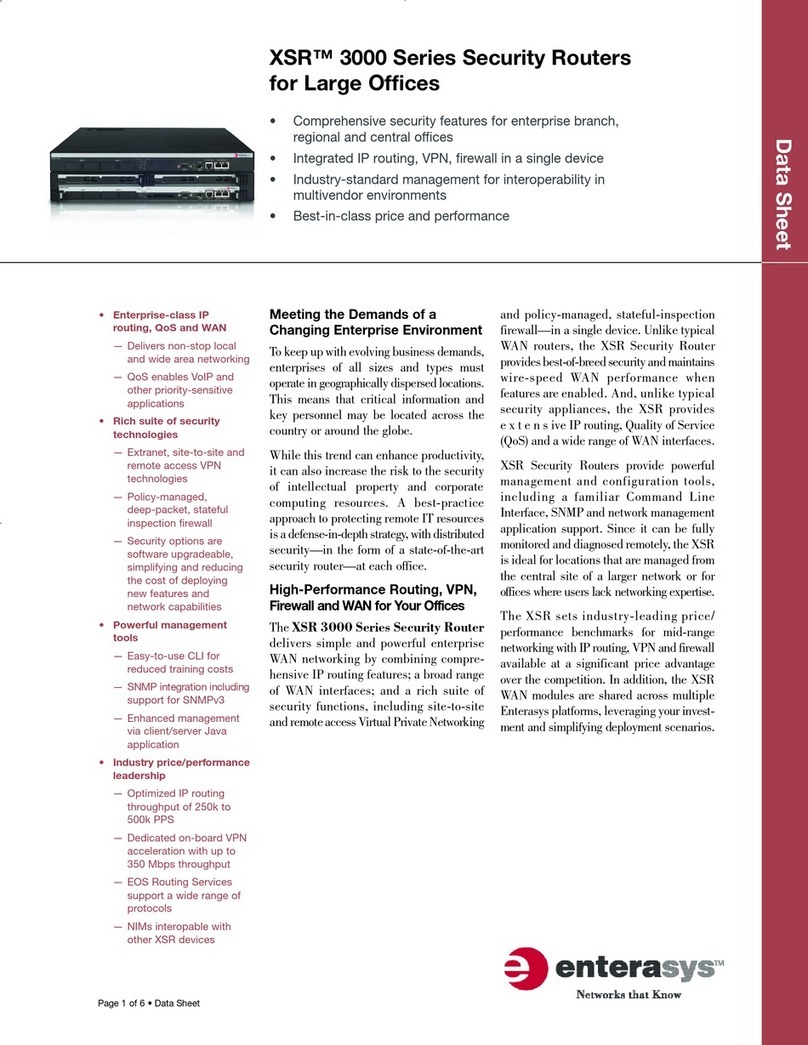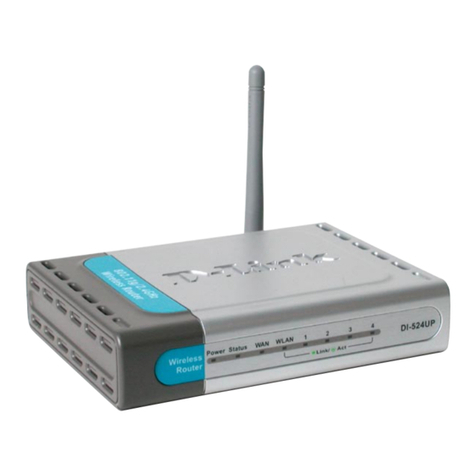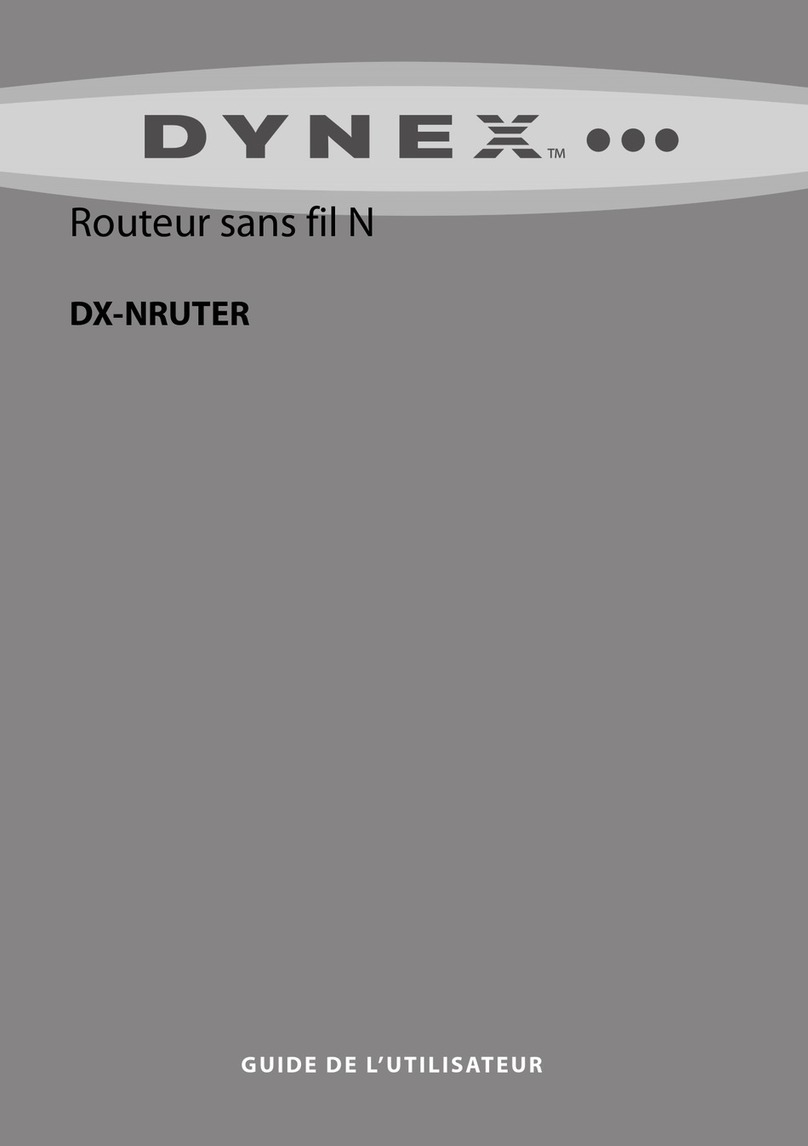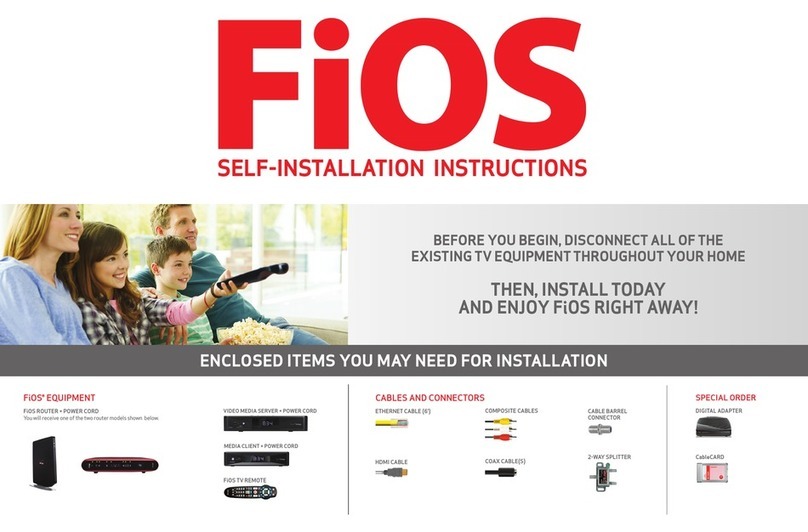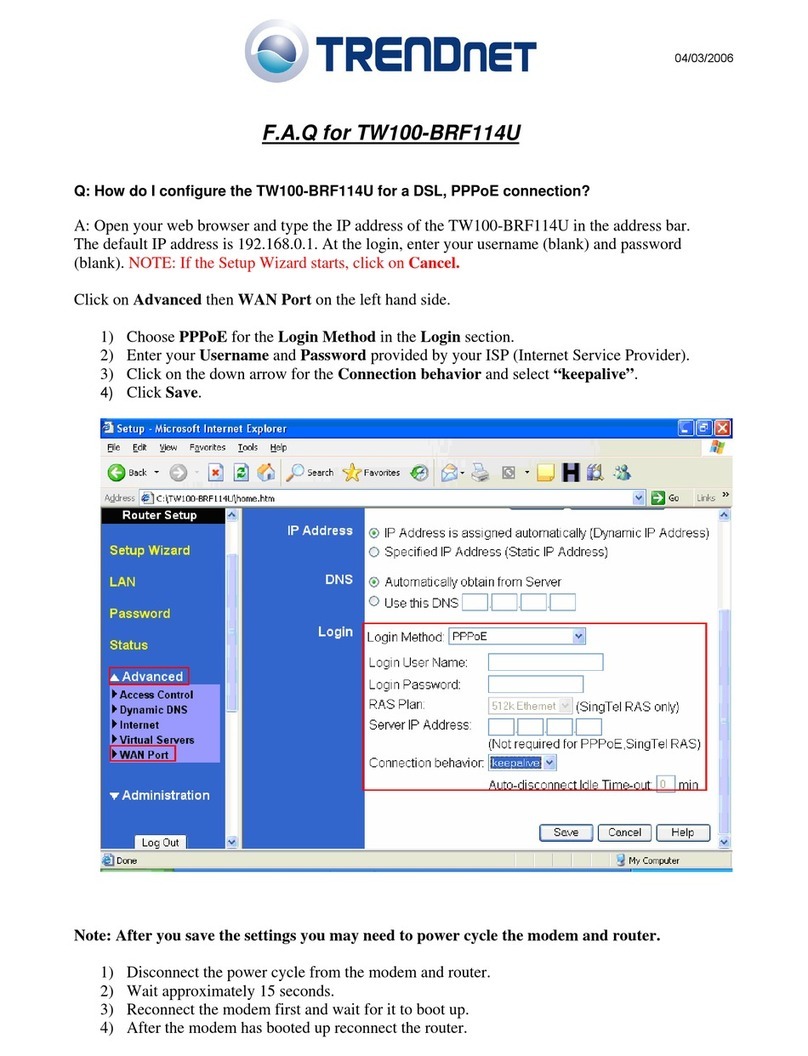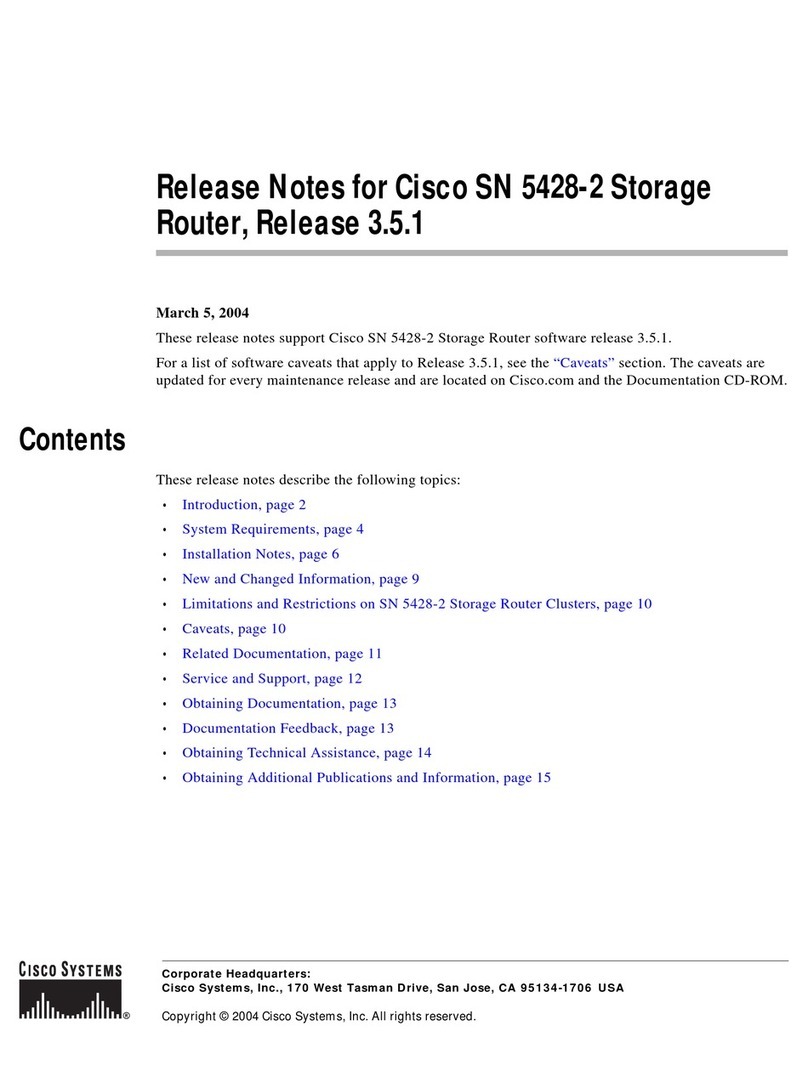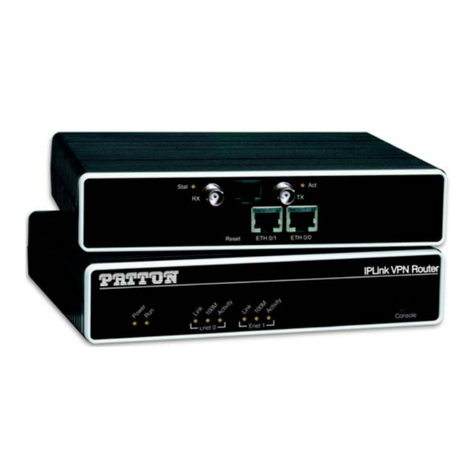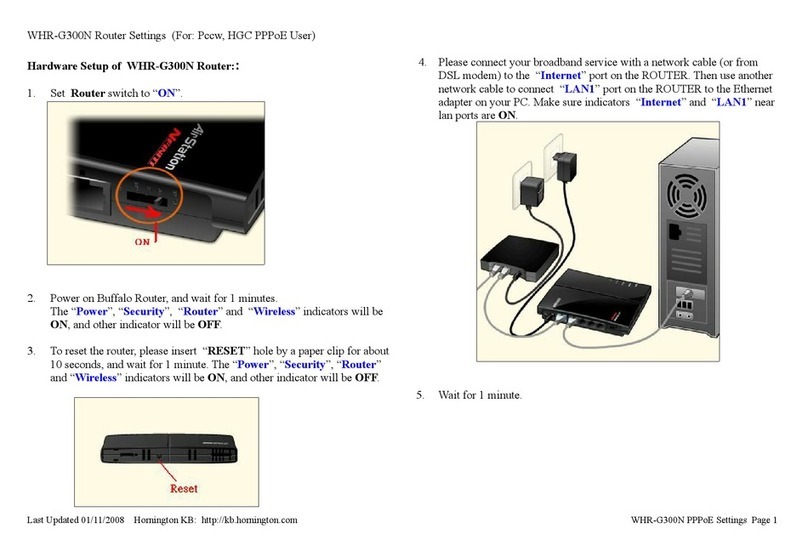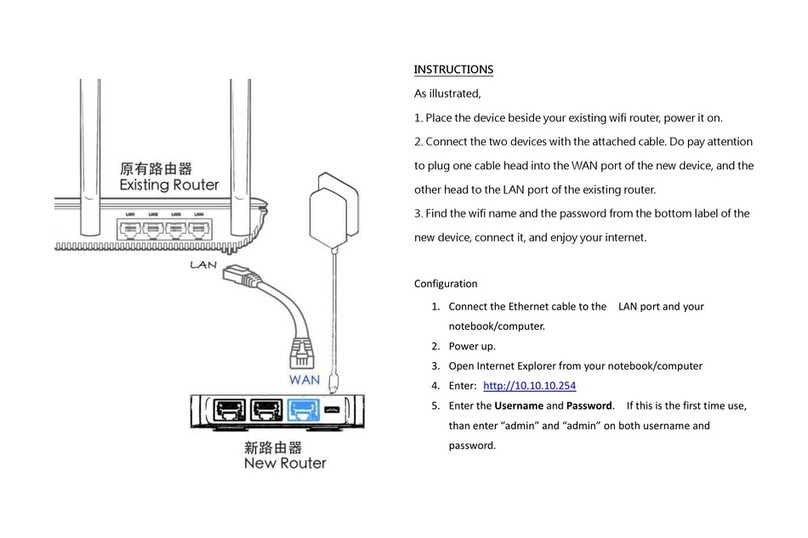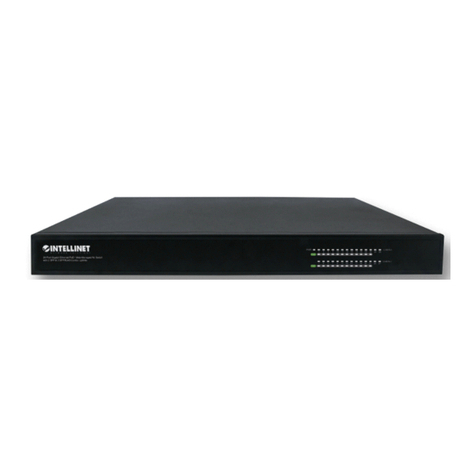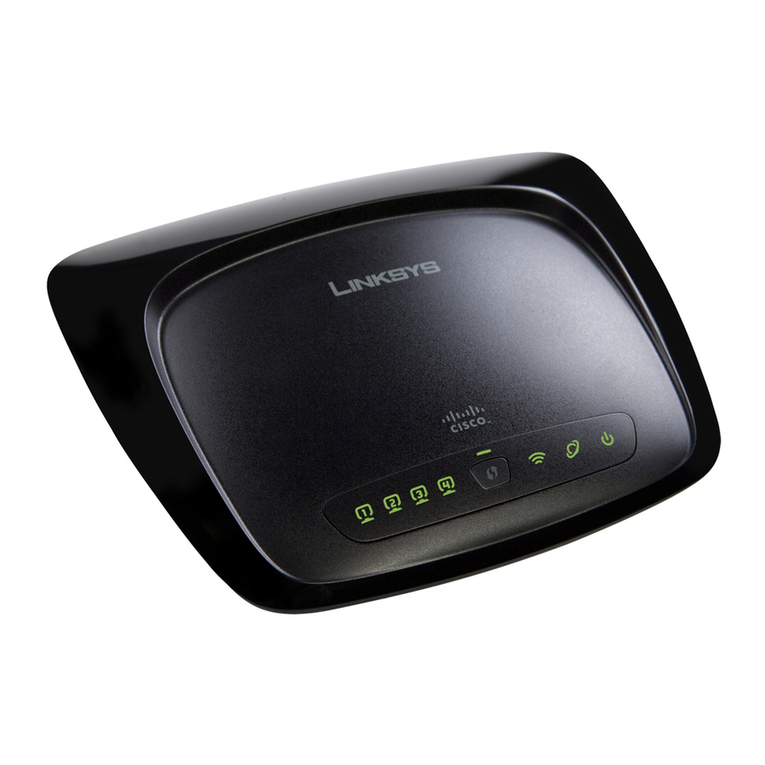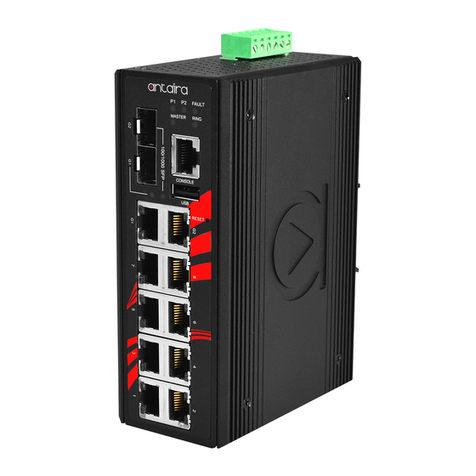Empi Hybresis 199587 User manual

Controller - Instructions For Use
READ THE HYBRESIS PATCH AND CHARGING STATION
INSTRUCTIONS FOR USE FOR ADDITIONAL IMPORTANT
INFORMATION.
REF: 199587

Underwriters Laboratories
Inc., indicates product
meets US and Canadian
product safety standards.
This device complies with
UL 60601-1 and CSA
C22.2 No. 601-1-M90
Keep Dry
Keep Away from Sunlight
Do not wear electrode or
controller during Magnetic
Resonance Imaging (MRI)
scans as this may result
in metal overheating and
causing skin burns in the
area of the patch
Refer to Instruction
Manual/Booklet
Council Directive 2002/96/
EC concerning Waste
Electrical and Electronic
Equipment (WEEE).
Indicates a requirement
not to dispose of WEEE as
municipal waste. Contact
your local distributor for
information regarding
disposal of the unit and
accessories.
Type BF Equipment
“On” / “Off” (Push-Push)
For Prescription Only
Precautionary Instructions
GLOSSARY OF SYMBOLS
This device may contain one or all of the following symbols:
11N1
Rx
ONLY

THEORY OF OPERATION
Iontophoresis transports charged water-soluble drugs and other ionic
substances across intact skin. Iontophoresis technology is based on
the principle that an electric potential causes charged water-soluble
ions in solution to migrate according to their electrical charges. The
distribution of a charged ionic drug delivered by iontophoresis is
dependent upon the charge of the ion, the size of the ion (molecular
weight), the strength and duration of the electrical current applied,
the composition of the Patch and numerous other factors.
DESCRIPTION
The Hybresis System delivers charged water-soluble drugs
and other ionic substances across intact skin and consists of
three components: a Charging Station, rechargeable Controller(s)
and disposable Patch(es).
The Hybresis System is designed to provide
the following three treatment options:
Hybresis Treatment
The Controller delivers current at 3 mA to the Patch for three
minutes for a Skin Conductivity Enhancement (SCE), followed
by the patient wearing the Patch for approximately one to two
hours, resulting in a 40-80 mA-min treatment respectively.
Standard Treatment
The Controller delivers current at 2, 3 or 4 mA to the Patch for 10-20
1

minutes, resulting in a 40 mA-min treatment. For an 80 mA-minute
treatment, repeat the treatment.
Patch Treatment
The Patch delivers low-level current over 2-4 hours, resulting in an
approximate 40-80 mA-min treatment respectively.
INDICATIONS
The Hybresis System is indicated for the administration of soluble salts
or other drugs into the body for medical purposes as an alternative to
hypodermic injection.
CONTRAINDICATIONS
• Cardiac pacemakers - Do not use on patients with pacemakers or
other implanted devices.
• Drug sensitivity – Do not use on patients with known sensitivity to
the drug to be administered.
• Pregnancy – Do not use on pregnant women. The safety of the
system used during pregnancy has not been established.
• Scarring – Do not use on damaged skin, denuded skin or other
recent scar tissue.
• Skin sensitivity – Do not use on patients with known sensitivity to
electrical current or to the solution being administered.
• Head treatment – Do not treat across either the temporal region or
the orbital region.
2

3
• Keep out of the reach of children and pets.
• Do not apply electrodes such that the current pathway crosses the heart or brain, as safety
has not been established.
• Advise the patient to remove electrodes if any undue sensation of pain or burning occurs
during the treatment and to report discomfort to clinic.
• To establish good contact between the electrodes and skin, excessive hair may be clipped, but
DO NOT SHAVE. Shaving may cause skin breaks that are not readily seen and can increase the
risk of adverse skin reactions.
• Do not apply over broken or compromised skin (e.g., sunburns, cuts, or acne) due to increased
risk of skin reaction.
• Small pinhead size blisters may result in response to the drug. Contact physician if problem
persists longer than 24 hours.
• On rare occasions, iontophoresis therapy can result in transient skin reactions such as rash,
inflammation, irritation or burns. These skin reactions may be the result of individual sensitivity
to the ionic solution used, the condition of the skin at the onset of treatment, reaction to the
materials in the electrodes, or a poor connection between the electrode and the patient’s skin.
Advise the patient of this possibility before starting treatment. If a visible skin reaction does
occur, instruct the patient to discontinue the treatment and consult the prescribing physician.
• Care must be taken when operating this equipment adjacent to or stacked with other
equipment. Potential electromagnetic or other interference could occur to this or to the other
equipment. Try to minimize this interference by not using other equipment in conjunction
with it.
• The system is not suitable for use in the presence of a flammable anaesthetic mixture with air
or with oxygen or nitrous oxide.
• Do not wear electrode or controller during Magnetic Resonance Imaging (MRI) scans as this
may result in metal overheating and causing skin burns in the area of the patch.
Warnings

Warnings
4
• Consult directions for the use of the drug before delivery. Some drugs
require a specific polarization for use. Observe the indications,
contraindications, warnings and precautions related to this issue.
• Do not use electrodes that have been previously used as these electrodes
have been designed for single use only.
• Inspect the electrodes before use. Discard any electrode that shows signs
of alteration or damage, as these electrodes may not be safe for use.
• The electrodes can be worn during normal activity. However, excessive
motion where the electrodes have been placed can cause poor contact
between the skin and the electrode or uneven distribution of current,
resulting in greater risk of skin irritation.
• A transient erythematous reaction, characterized by a uniform red pattern,
can sometimes occur directly under one or both electrodes. The redness
usually disappears within 12 hours of treatment. Advise the patient of this
possibility before starting treatment.
• Use only saline ampule supplied for the return pad. For positive polarity (+),
use only drugs with Chloride (Cl-) counter ions. Use of tap water or any
other solution may cause tattooing or staining.
• Handle the system with care. Do not immerse the system in fluids or allow
it to be connected with other electrical devices. Do not drop, abuse, or in
any way exceed normal use. Do not sterilize.
• Do not operate this system in an environment where other devices are
being used that intentionally radiate electromagnetic energy in an
unshielded manner. Portable and mobile RF communications equipment
can affect Medical Electrical Equipment.

CONTROLLER OPERATION
The Hybresis Controller is a solid state, microprocessor-controlled
device that delivers low-level electrical current. When used in
conjunction with the Patch, the Controller provides visual and audible
indications of treatment status.
WARNING:
• DO NOT allow it to be immersed or come in contact with fluids.
• DO NOT connect the unit to external devices except the Hybresis Patch
or the Hybresis Charging Station. Doing so may cause a malfunction or
patient injury.
Button Functions -
There are three buttons on top of the Controller. The buttons have the
following functions:
ON/OFF -
Turns the power on and off. After power-on, the unit defaults to
Hybresis mode. If power is turned off during a treatment, the current
is ramped to zero (to avoid excessive electrical sensation) before
the unit powers off. This aborts the treatment and mA- minute dose
information is lost.
START/PAUSE -
Starts the selected treatment or pauses treatment. If pressed during
a treatment, the current will ramp down and the treatment will be
5

paused. Pressing this button while paused will resume the treatment.
STANDARD MODE -
Selects a standard treatment of 2, 3 or 4 mA. The selection can be
made during setup, pause or treatment. If made during treatment,
the current will ramp-up or ramp-down to the newly selected
current setting.
Lights -
There are five lights on the face of the Controller that
indicate the following:
Hybresis Treatment - One Green Light
Hybresis Treatment selected.
Standard Mode - One of Three Green Lights
Standard Treatment of 2, 3 or 4 mA selected.
Interpretation of Four Green Lights
• Flashing Slowly (1 Hz): Setup or Pause
• Flashing Rapidly (4 Hz): Ramp-up,
Ramp-down or Current Interrupt
• Continuous: Steady State Current
Alarm Light - One Multicolor Light
• Red Flashing Rapidly: Current Interrupt Warning
• Yellow Continuous: Low Battery
Hybresis Treatment Light
Standard
Treatment
Lights
Alarm Light
6

Warnings or Cautions
Light Warning
or Caution Cause Corrective Action
Yellow light con-
stant with beep
sequence every
30 seconds
Low Battery: Controller
not recently recharged.
Press OFF to terminate the
treatment. Place the Control-
ler in a Charging Station until
fully charged.
Red light and
selected green
light flashing
rapidly with beep
sequence every
30 seconds
Current Interrupt: May
be caused by a loose
connection, insuf-
ficiently hydrated drug
pads or poor contact
between the Patch and
the skin.
Press PAUSE to pause the
treatment. Check for loose
connections, properly hy-
drated drug pads and good
contact between the Patch
and the skin. After correcting
the problem, press START to
continue the treatment.
Automatic Time Calculation -
All time calculations are performed automatically, even if the current
setting is changed.
Automatic Current Ramp Up -
When the start button is pushed, the Controller automatically ramps up
the current output to the desired setting. While the current is ramping,
the green light will flash rapidly. When the current reaches the setting
selected, the green light will be on constantly.
7

Automatic Current Ramp Down -
After reaching the preset dose, the current automatically decreases,
returning to 0 mA, indicating the treatment is complete. Also, automatic
current ramp down takes place if the ON/OFF button is pressed (i.e.
Treatment Abort) or if the PAUSE button is pressed.
Automatic Fast Current Shut Off -
If there is a Low Battery Alarm or Current Interruption Alarm, the
current will be immediately set to 0 mA.
PATCH DESCRIPTION
The Hybresis Patch is a disposable, single-use Patch with an internal
battery and current-limiting circuitry. It can deliver both negatively and
positively charged water-soluble drugs. The Patch-Only Treatment can
be used with and without the Controller. The Controller is used with the
Patch to deliver a Hybresis or Standard Treatment. A Patch Treatment
does not require the use of the Controller.
Drug Polarity Labeling -
The polarity of the drug pads are labeled on the Patch.
Patch Drug Pads -
The Patch has two drug pads. Each drug pad has a ~1.5 mL fill volume.
Use negatively charged water-soluble drugs on the negative (-) drug pad
and positively charged water-soluble drugs on the positive (+) drug pad.
Battery Pack and Controller Connector -
The Battery Pack that contains two 3-Volt batteries is also the
connecting location for the Controller.
8

PREPARING THE PATIENT
Advise the patient that iontophoresis has the potential to result in skin
irritation and/or burns.
• Direct current may result in transient erythema under the pads. The
erythema generally resolves itself within a few hours to a few days.
• Use caution when treating patients with sensitive skin or those who
may have difficulty healing.
1. Advise the patient that iontophoresis causes mild tingling, prickling
and/or a warm sensation. This is normal and should be anticipated
by the patient.
2. Advise the patient to report immediately any pain during treatment.
If the patient complains of pain, pause the treatment, inspect the
area under the Patch and make any necessary adjustments (e.g.
reposition the Patch to ensure full skin contact, decrease current,
etc.) before resuming the treatment, or discontinue the treatment.
3. Advise the patient to remove any jewelry that may come in contact
with the Patch.
9

PREPARING THE PATCH
1. Tear open the sealed treatment kit and remove the Patch.
2. Place the Patch on a flat surface with the absorbent pads facing up.
3. Clean the treatment site thoroughly with alcohol prep by rubbing for six
to eight seconds to remove dry skin, oils and other contaminants. Allow
the treatment site to dry completely.
CAUTION: Failure to clean skin thoroughly may cause excessive skin
irritation or burns.
NOTE: The Patch will not adhere sufficiently to skin with lotion, oil or dirt.
NOTE: Clip hair if necessary to improve skin contact. DO NOT shave.
4. Place ~1.5 mL of a charged water-soluble drug on appropriate
polarity pad (active pad). On the other pad (return pad), apply
~1.5 mL of supplied saline ampule. Use negatively charged water-
soluble drugs on the negative (-) drug pad and positively charged
water-soluble drugs on the positive (+) drug pad to actively deliver
the drug. For (+) polarity, use only drugs with Chloride (Cl-) counter ions.
NOTE: Fill volume is approximately ~1.5mL. Drug pads should be
saturated but not overfilled. If the drug pads are overfilled beyond the
saturation point, the pads will leak and directly affect the adhesion of
the patch to the treatment site.
CAUTION: Failure to evenly distribute drug or saline onto active
or return pads can cause excessive skin irritation or burns.
DO NOT fill Patch while it is on the patient.
DO NOT over or under fill drug pads.
DO NOT use drugs that are not water-soluble.
10

11
DO NOT use drug suspensions.
DO NOT use a Patch that appears altered or damaged.
DO NOT apply Patch to dirty, oily or lotioned skin.
Use of tap water or non-chloride drug solution on positive polarity
may cause tattooing or staining.
5. Make sure that the treatment site has intact skin.
CAUTION: Failure to follow these guidelines may result in skin
irritation or burns.
WARNING: DO NOT apply the Patch over damaged or denuded
skin or other recent scar tissue, skin with ingrown hair, pimples,
sunburned skin, razor nicks or skin with wounds that have not healed.
6. Remove the adhesive release liner from the hydrated Patch.
7. Apply the hydrated Patch so that the drug pad is over the treatment
site and secure it by pressing the adhesive border. Avoid pressing
directly over the pads. Pressing directly on the pads can cause
leakage that will compromise adhesion to the patient.
NOTE: DO NOT tape or bind the Patch during treatment. Do not apply hot
or cold therapy over Patch during treatment.
ADMINISTERING TREATMENT
The Hybresis System is designed to provide the following three treatment
options:
Hybresis Treatment
The Controller delivers current at 3 mA to the Patch for three minutes for a
Skin Conductivity Enhancement (SCE), followed by the patient wearing the
Patch for approximately one to two hours, resulting in a 40-80 mA-minute
treatment respectively.

Standard Treatment
The Controller delivers current at 2, 3 or 4 mA to the Patch for 10-20
minutes, resulting in a 40 mA-minute treatment. For an 80 mA-minute
treatment, repeat the treatment.
Patch-Only Treatment
The Patch delivers low level current over 2-4 hours, resulting in an
approximate 40-80 mA-minute treatment respectively.
HYBRESIS MODE TREATMENT
NOTE: While using the Controller, should an in-process iontophoresis
treatment need to be stopped or paused, DO NOT suddenly remove
the Controller from the Patch without first switching off the Controller.
To stop a treatment while the Controller is administering iontophoresis,
press the ON/OFF button and wait a few moments for the Controller
to turn off.
1. Examine the Controller before use to assure that the two prongs that
insert into the Patch are free of grime and debris. Dirty contacts could
cause erratic behavior during treatment. If needed, the prongs may be
cleaned with an alcohol wipe.
2. Push the ON button on the Controller. The Green Hybresis Light will
blink slowly.
3. Attach the Controller to the Patch. The Patch connector (located at the
center of the Patch) plugs into the slot on the back of the Controller.
Ensure that the Patch connector is fully and securely
engaged into the Controller- a click will be heard upon full engagement.
4. Position the patient so that there is no pressure on the Patch during
treatment.
5. Press the START button to begin treatment. The Green Hybresis Light
will blink more rapidly, then glow steadily.
12

13
6. After three minutes, the Controller will sound a beep and the
lights will turn off automatically. This indicates that the Skin
Conductivity Enhancement (SCE) is completed.
7. Remove the Controller from the Patch. The Patch will now continue
to deliver the remainder of the iontophoresis treatment to the
patient.
8. The average time to complete the dose is indicated in the following
table. To prevent excessive dosing, the Patch automatically
switches off iontophoresis after the maximum dose has been
administered.
9. Instruct the patient to remove and discard the Patch after a
minimum of one to two hours for a 40 to 80 mA-minute dose
respectively.
10. Discard the Patch after treatment has been completed. The Patch
cannot be reused.
STANDARD MODE TREATMENT
NOTE: While using the Controller, should an in-process iontophoresis
treatment need to be stopped or paused, DO NOT suddenly remove
the Controller from the Patch without first switching off the Controller.
To stop or pause a treatment while the Controller is administering
iontophoresis, press the ON/OFF button and wait a few moments for
the Controller to turn off.
1. Press the ON/OFF button on the Controller. The Green Hybresis
Light will blink slowly.
.
Hybresis Mode40 mA-minutes 60 mA-minutes 80 mA-minutes
Wear Time 1 hour 1.5 hours 2 hours

2. Push the Standard Mode button on the Controller. The 2 mA indicator light
will blink slowly. Each additional depression of the button will scroll to the
next setting- 3 mA or 4 mA.
3. Attach the Controller to the Patch. The Patch connector (located at the
center of the Patch) plugs into the slot on the back of the Controller. Ensure
that the Patch connector is fully and securely engaged into the Controller- a
click will be heard upon full engagement.
4. Position the patient so that there is no pressure on the Patch during
treatment.
5. Press the START button to begin treatment. The Green mA Light will blink
more rapidly, then glow steadily.
6. To change the iontophoresis current setting while the Controller
is administering a treatment, press the Standard Mode button to re-select
the desired setting. Within a few moments, the Controller will automatically
adjust to the new setting.
7. In 10-20 minutes (see following table) the Controller will sound a
beep and the lights will turn off, indicating the 40 mA-minute
treatment has been completed.
Standard Mode 40 mA-min 80 mA-min
2mA 20 minutes Repeat steps 1-2 and 5-7
3mA 13 minutes Repeat steps 1-2 and 5-7
4mA 10 minutes Repeat steps 1-2 and 5-7
8. Remove the Controller from the Patch.
9. Remove and discard the Patch after the treatment has been completed. The
Patch cannot be reused.
14

Controller Specifications
Electrical Shock Internally Powered Type BF
Battery Rechargeable Lithium-ion, 3.7 VDC Nominal, 230 mA- Hr
Environmental Storage: 10° - 35° C (50° - 95° F);
Conditions Relative Humidity: 10-75%;
Operating: 15° - 30° C (59° - 86° F);
Ingress of Not protected against ingress of water, IPX0
Water
Flammablility Do not use around flammable gasses,
liquids or materials
Treatment Hybresis and Standard
Dimensions 5.5 cm H x 4.5 cm W x 1.5 cm L
Weight 23 g
Disposal Dispose according to local, state and
federal regulations.
Dose Range 0 to 40 mA-minute (Hybresis Patch has an 80 mA-minute
dose capacity)
Controller Capacity Approximately 200 mA-minutes when fully charged.
Maximum Voltage 70V DC
Maximum Current 4 mA
Current Ramp Up 0.1 mA/sec (start of treatment, restart after pause)
15

Current Ramp Down 0.5 mA/sec (end of treatment, pause, power-off)
Fast Current Instantaneous (Low Battery Warning, Current
Ramp Down Interrupt Alarm)
Buttons ON/OFF, START/PAUSE and STANDARD
Treatment Lights Green Flashing: Hybresis, 2, 3 or 4 mA ramping-up or
ramping-down Green Continuous: Hybresis, 2, 3 or
4 mA steady state
Battery Light Yellow Continuous: Low Battery Warning
Interrupt Light Red Flashing: Current Interruption Alarm
16

Guidance and manufacturer’s declaration – electromagnetic emissions
The Hybresis Controller is intended for use in the electromagnetic environ-
ment specified below. The customer or the user of the Hybresis Controller
should assure that it is used in such an environment.
Emission tests Compliance Electromagnetic
environment - guidance
RF emissions
CISPR 11
Group 1 The Hybresis Controller uses
RF energy only for its internal
function. Therefore, its RF
emissions are very low and are
not likely to cause any interfer-
ence in nearby electronic
equipment
RF emissions
CISPR 11
Class A The Hybresis Controller is
suitable for use in all establish-
ments, including domestic
establishments and those
directly connected to the pub-
lic low-voltage power supply
network that supplies buildings
used for domestic purposes.
Harmonic emissions
IEC 61000-3-2
Class A
Voltage fluctuations
IEC 61000-3-3
Complies
17

Guidance and manufacturer’s declaration – electromagnetic immunity
The Hybresis Controller is intended for use in the electromagnetic environment specified below. The
customer or the user of the Hybresis Controller should assure that it is used in such an environment.
Immunity test IEC 60601
test level Compliance level Electromagnetic
environment - guidance
Electrostatic
discharge (ESD)
IEC 61000-4-2
±6kV contact
±8kV air
±6kV contact
±8kV air
Floors should be wood, con-
crete or ceramic tile. If floors
are covered with synthetic
material, the relative humidity
should be at least 30%.
Electrical fast
transient/burst
IEC 61000-4-4
±2kV for power
supply lines
±1kV for input/output
lines
±2kV for power sup-
ply lines
±1kV for input/output
lines
Mains power quality should be
that of a typical commercial or
hospital environment.
Surge
IEC 61000-4-5
±1kV differential mode
±2kV common mode
±1kV differential mode
±2kV common mode
Mains power quality should be
that of a typical commercial or
hospital environment.
Voltage dips, short
interruptions and
voltage variations
on power supply
input lines
IEC 61000-4-11
5% UT
(>95% dip in UT) for
0,5 cycle
40% UT
(60% dip in UT) for
5 cycles
70% UT
(30% dip in UT) for
25 cycles
<5% UT
(>95% dip in UT)
for 5 sec
5% UT
(>95% dip in UT) for
0,5 cycle
40% UT
(60% dip in UT) for
5 cycles
70% UT
(30% dip in UT) for
25 cycles
<5% UT
(>95% dip in UT)
for 5 sec
Mains power quality should be
that of a typical commercial
or hospital environment. If the
user of the Hybresis Controller
requires continued operation
during power mains interrup-
tions, it is recommended that
the Hybresis Controller be
powered from an uninterrupted
power supply or a battery.
Power frequency
(50/60Hz) magnetic
field
IEC 61000-4-8
3 A/m 3 A/m Power frequency magnetic
fields should be at levels char-
acteristic of a typical location
in a typical commercial or
hospital environment.
NOTE UTis the a.c mains voltage prior to application of the test level.
18
Table of contents
